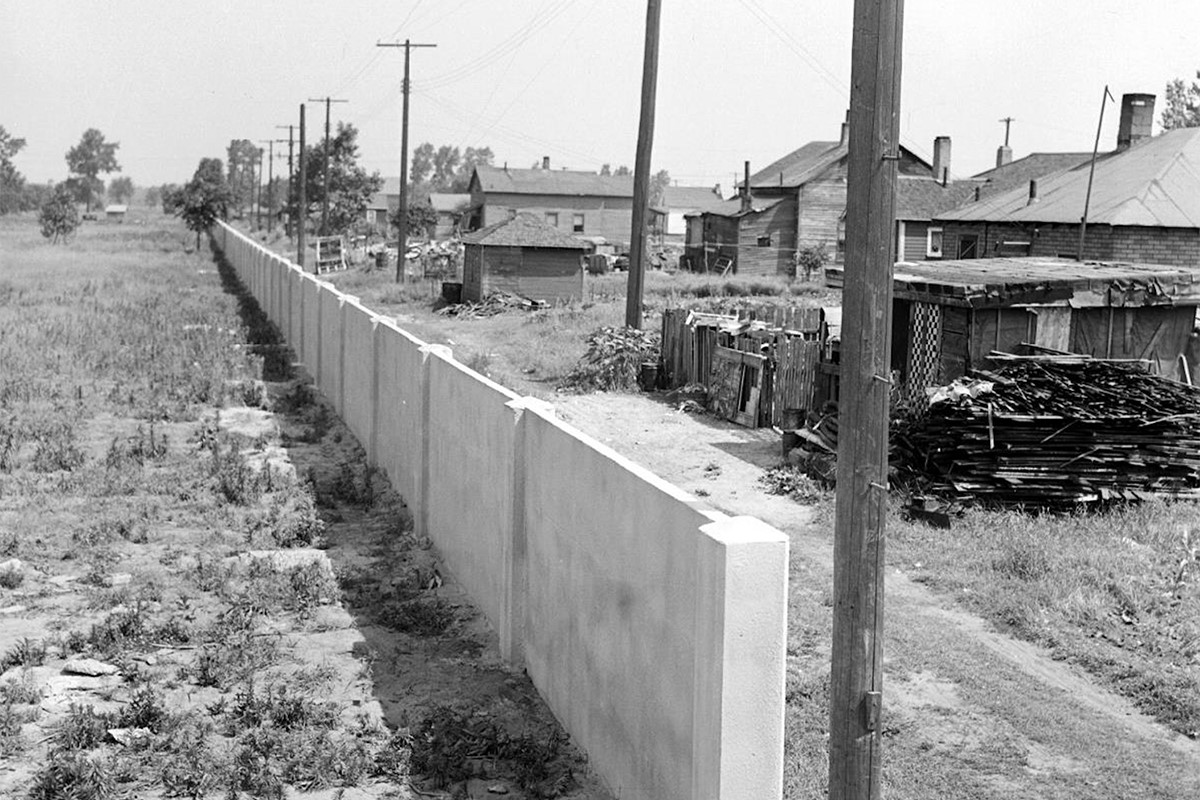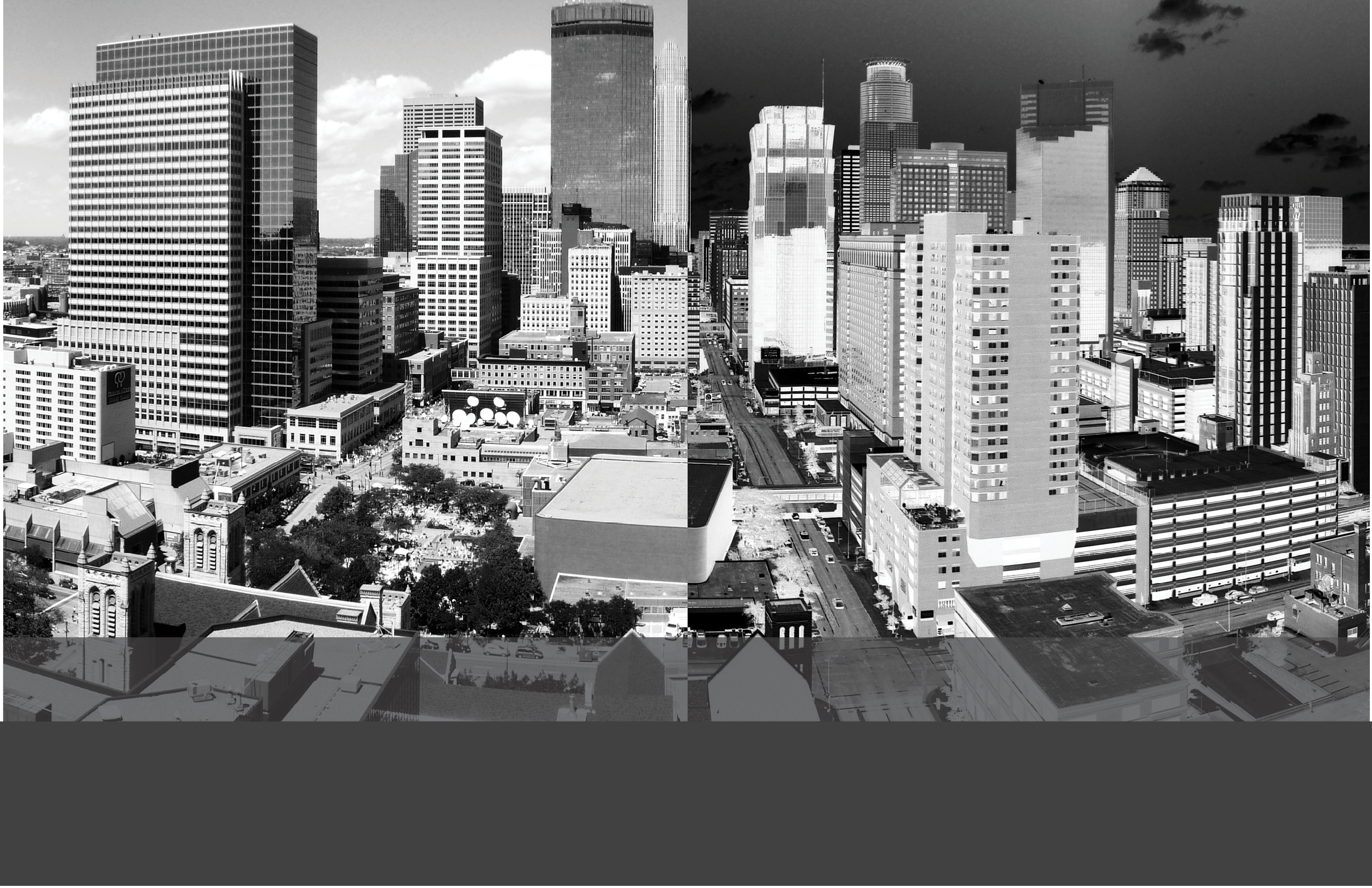Remote workers, who tend to be college-educated, also want to move to areas with a robust mix of local amenities.

Illustration by Kathleen Bolter; Photographs by Cottonbro Studio via Pexels.
Since COVID forced millions to work from home, it’s evident that remote work, at least part-time, has become firmly established. The declining demand for office space in central cities such as New York and San Francisco has drawn both scholarly and popular attention. However, more quietly, the trend of working from home has given many rural communities in the Midwest their first population boost in years.
Population Change Before and After the Pandemic
Between July 2010 and July 2019 (a period ending a few months before the pandemic), the population of most counties in the Midwest shrank. The few exceptions were in metro areas such as Columbus, Grand Rapids, Indianapolis, Des Moines, and Minneapolis–St. Paul. During this nine-year period, rural areas generally saw sustained population decline, as did many traditional manufacturing centers, such as Youngstown’s Mahoning County and Flint’s Genesee County.
The Role of Remote Work
A key question for policymakers is, “How much of this change in growth can be attributed to remote workers?” For an answer, I look at the difference in the share of people working from home in 2019 compared to 2021 (the most recent year that has available data) in rural areas in the Midwest, and then compare this change in the work-from-home rate with the growth in population of these areas from 2019 to 2021.
There is a clear connection between a rise in the number of people working from home for every 1,000 residents and the growth in population. For every new person working from home per 1,000 residents, local population growth was 0.09 percentage points higher.
Even when we look only at rural areas that shrank in population between 2010 and 2019, 59 percent of these areas saw their populations subsequently increase between 2019 and 2021. In these communities, the relationship between more people working from home and population growth remains the same: for every new person working from home per 1,000 residents, local population growth was an extra 0.085 percentage points higher.
Among the factors that may be driving this growth are preexisting amenities that draw in outsiders. I look at how much housing in a county is used for seasonal or recreational purposes and the increase in people working from home in that county as a connected measure of how interested people were in spending time in a given county before the pandemic. Between 2019 and 2021, as the share of a county’s housing set aside for seasonal or recreational use rises by 1 percentage point, there’s an addition of 0.07 workers working from home for every 1,000 residents in that county.
This relationship between working from home and population growth in nonmetro areas is something of a surprise. Research has shown that urban areas saw the greatest increases in working from home during the pandemic period. However, because more people with college degrees started working from home, and these educated individuals usually preferred to live in areas with lots of amenities even before the pandemic, it’s not unexpected that the increase in working from home helped some rural areas with preexisting amenities attractive to nonresidents grow again instead of losing population.
Making Remote Workers a Community Asset
This type of surge in population growth is both an opportunity and a challenge for many smaller communities. Even before the pandemic, many rural and small-town communities struggled with housing shortages, particularly for seasonal workforce staff in resort areas. Traverse City, Michigan, for example, has seen both growth in start-up companies from the influx of new workers as well as strains on its local housing stock, particularly for lower-income workers. Traverse City has responded to the challenge by pioneering a new program aimed at creating “workforce” housing. This is specifically intended to provide affordable housing for people making between 80 and 120 percent of the area’s median income. For a single person, in the case of Traverse City, that would be between $50,400 and $75,600 a year. Traverse City has agreed to accept two housing developments into its payment-in-lieu-of-taxes (PILOT) program, whereby these developments pay 10 percent of their net rental income to the city in place of paying property taxes, resulting in substantial savings to the developers and an increase in badly needed workforce housing for the area.
The example of Traverse City and other newly growing nonurban places offers tentative lessons for how rural and small-town areas can adapt to the new reality of a more mobile workforce. This is likely to capture policymakers’ attention not just because many who work from home make above-median incomes, but also because many Midwestern states have seen lackluster population growth for some time and are in danger of shrinking. Michigan, for example, recently launched the Growing Michigan Together Council, composed of 28 civic, governmental, educational, and corporate leaders, whose goal is to develop strategies to grow the state’s population. While incentives like relocation bonuses or tax credits for student debt payments may work, the experience of the pandemic also makes clear that one of the best ways to attract location-flexible workers is by having a strong mix of local amenities. State and local governments should thus work to ensure that their communities are nice places to live for all, which will pay dividends for new and old residents alike.
Policy Recommendations
• Address housing shortages by pioneering programs aimed at providing affordable housing.
• Explore strategies like incentives for relocation, tax credits for student debt payments, and other measures to attract location-flexible workers.
• Focus on developing a robust mix of local amenities to make communities attractive places to live for all residents.
Interview with the author
Author




